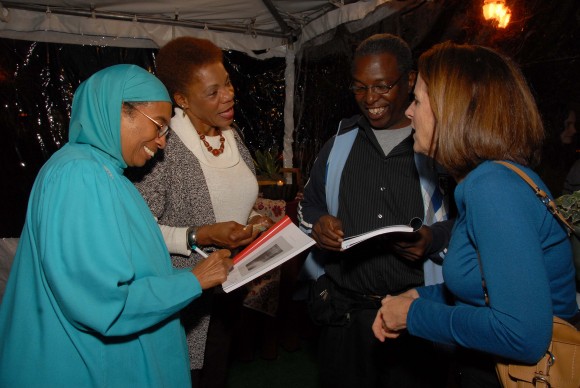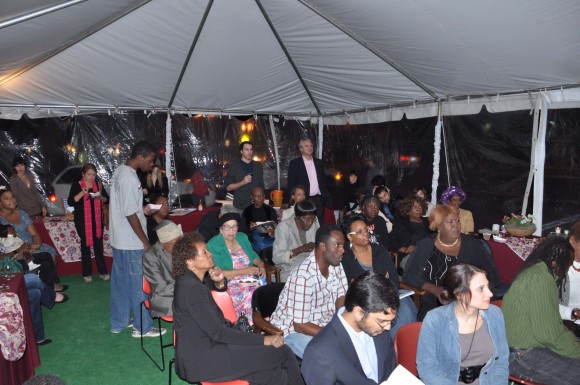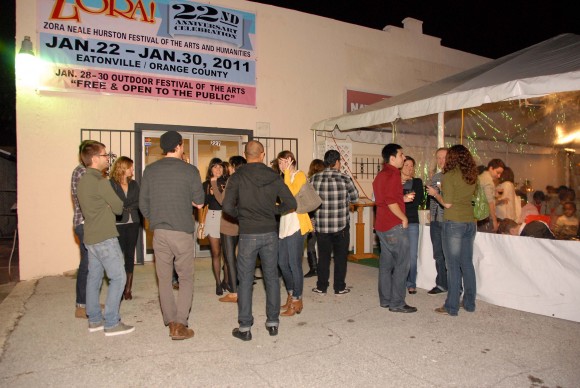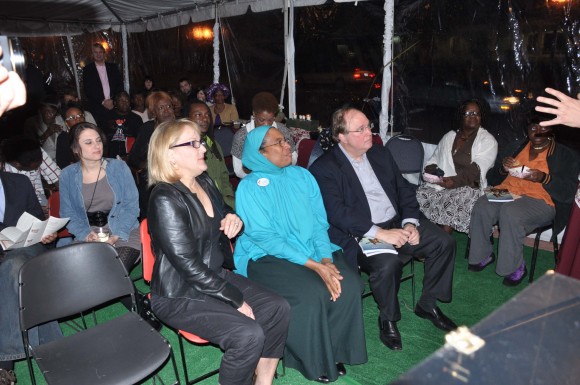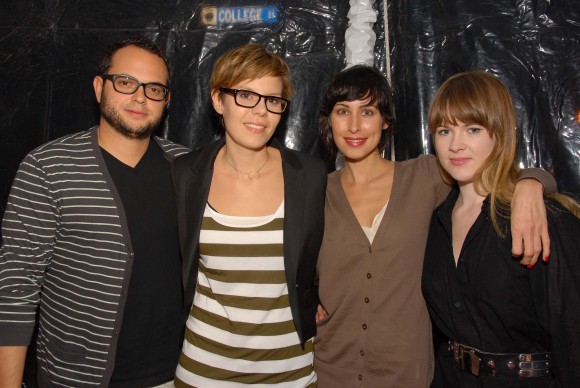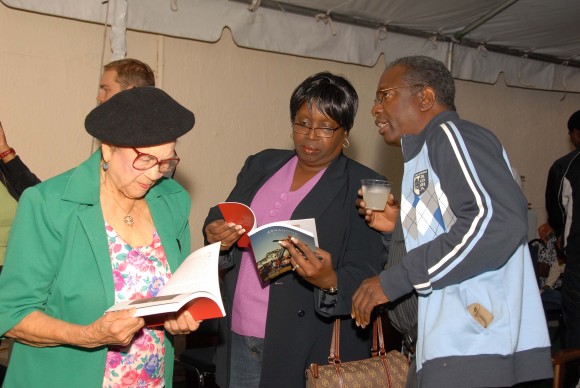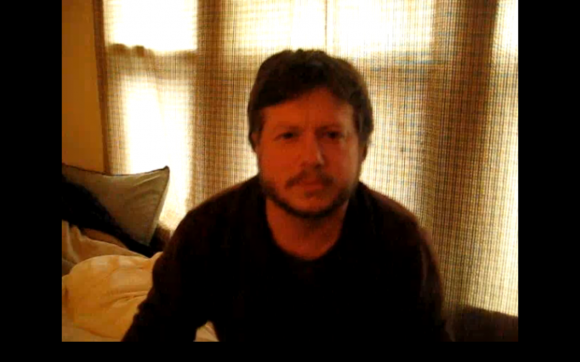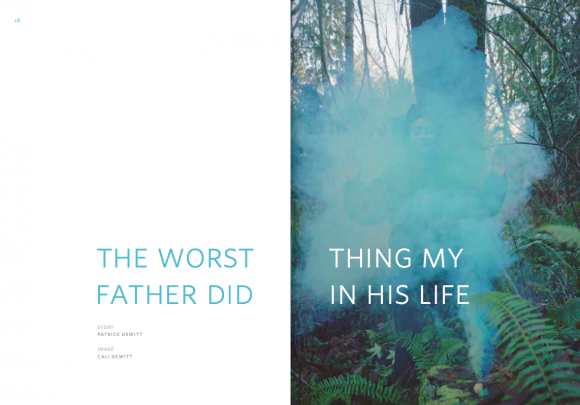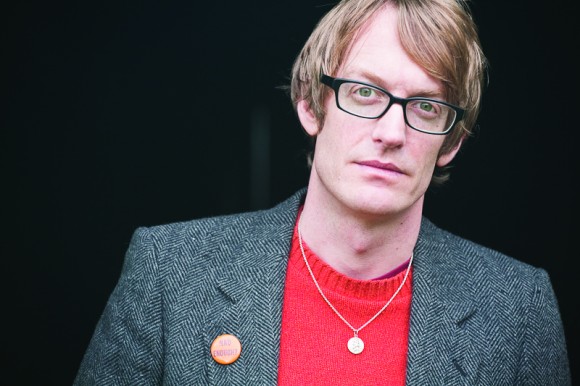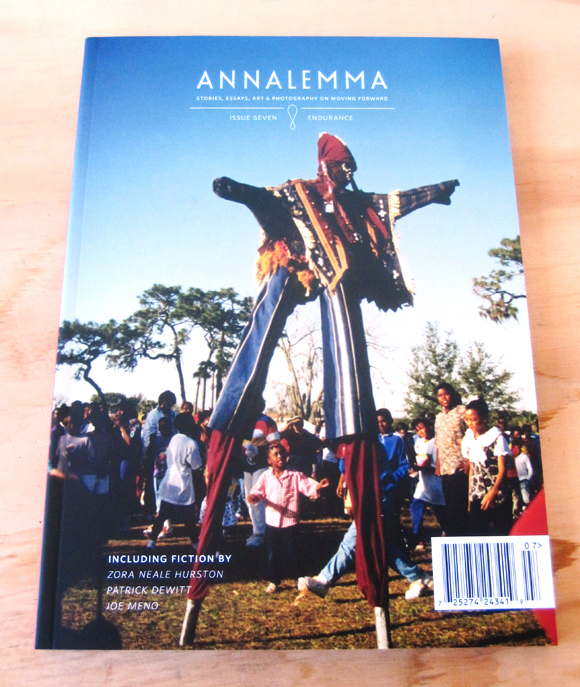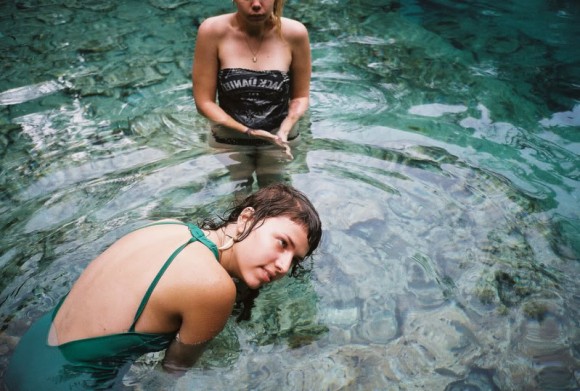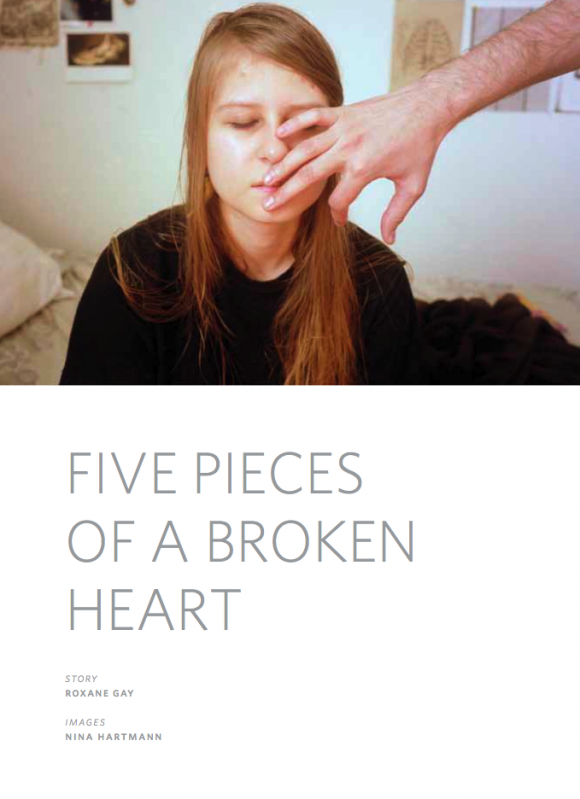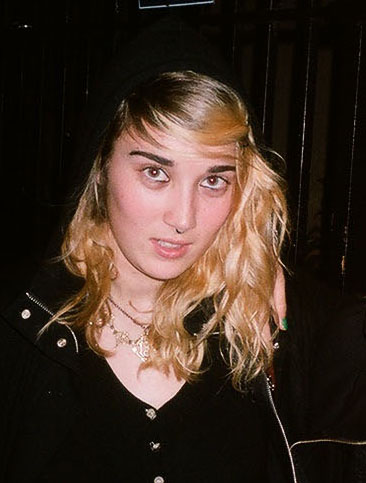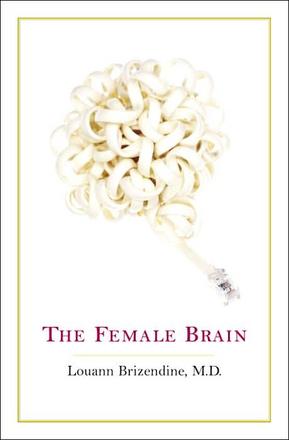Issue Seven contributor Nick Ripatrazone has taken it upon himself, God bless him, to blog a little something about each piece in Annalemma Issue Seven: Endurance over the course of the next few weeks. And he’s starting from the very beginning with Sasha Fletcher’s “Coming For to Carry Me Home,” the first and only poem we’ve ever published. Thanks Nick, looking forward to seeing what you think of all the pieces.
Archive for the ‘words’ Category
Issue Seven Preview: Howl.
If you live in Orlando then you know about the Enzian and its legendary status as the best damn place to see a good/weird/enlightening/confusing/interesting/mind-blowing movie and have a beer and maybe a veggie burger at the same time. If you don’t live in Orlando, now you know.
This weekend they’re hosting the Orlando premiere of the Allen Ginsberg movie Howl, starring everyone’s favorite mind-freak actor, James Franco. Go check it out this Saturday to get a sneak peek at Annalemma Issue Seven: Endurance. I’m not going to say what it is other than it’s going to be the only place you will be able to see this particular preview. Enjoy!
Eatonville Release Party Wrap-up.
The FL release party for Annalemma Issue Seven: Endurance was held in Eatonville, FL. Why?
Because of this man: Ted Hollins.
I first heard about Ted at a photo show curated by our very own print designer, Jen O’Malley. Jen consulted N.Y. Nathiri (director of the The Hurson Museum and founding board member of The Association to Preserve the Eatonville Community, pictured left) to determine who was the best photographer in Eatonville. She didn’t hesitate to name Ted. When Jen and I started talking about featured artists for the Endurance issue, Ted’s name kept coming up. He’s been documenting the ZORA! festival for the last 21 years. To us, nothing said endurance like the life and work of Zora.
So we put together Ted’s photo essay, we got N.Y. to write a really beautiful foreward for it and we decided to donate a portion of the proceeds from the issue to the Hurston Museum.
To get a sense of closure to the project, it only seemed right to throw the release party in Eatonville at the Hurston Museum. So that’s what we did.
And a lot of people came out and had a damn good time, as was our intention. Alberta, Moms, Karina and Alberto.
I stood up and said basically everything you just read. People looked at me funny while I spoke.
My heart was warmed with the old and new friends that came out to support. Metha and Kris.
The Black Bean Deli catering crew unleashed an avalanche of empanadas that Eatonville was not prepared for. They were not wearing sock garters so their socks got blown clean off. Andy, Janelle, Gabi and Jessi.
Magazines were perused and enjoyed. It was, far and away, the best Anna party ever thrown.
Thanks to Ted, Jen, N.Y. Nathiri, The Hurston Musuem, and, most of all, the Eatonville community for welcoming a bunch of strangely dressed outsiders with open arms. Don’t miss ZORA! fest happening at the end of January!
Issue Seven Preview: Simmons on Kneeland.
It may not always be the greatest timing to make a drastic life change while trying to promote a new issue of a magazine, but sometimes that’s just the way things work out. Good to see you again, reader of blogs.
In the interim, Issue Seven contributor Matthew Simmons recorded this video of himself reading an excerpt of the story “The Difference Between” by Andrea Kneeland from (you guessed it) Annalemma Issue Seven: Endurance.
Were you aware that it’s on sale now?

Issue Seven Preview: Patrick deWitt.
Patrick deWitt‘s debut novel, Ablutions (Houghton Mifflin Harcourt, 2009), spiraled readers into the whiskey soaked underbelly of Hollywood bars beyond any semblance of celebrity or glamor culture. His follow-up, The Sisters Brothers (Ecco, May 2011), takes place in Gold Rush era Oregon, following assassins Eli and Charlie Sisters, on their journey to California to dispatch an inventor. He also wrote the script for the upcoming teen dark comedy Terri, directed by Azazel Jacobs. DeWitt’s story appearing in Annalemma Issue Seven: Endurance, The Worst Thing My Father Did in His Life, concerns a man recounting a horrible act to his son over breakfast. This interview was conducted via email.
Annalemma: The father in this story engages in some pretty horrible behavior. A lot of your characters are prone to doing truly bad things. What’s interesting about people committing awful acts?
Patrick deWitt: I come from a long line of unabashed gossips, and addressing your question from that point of view, I can say that unpleasant behavior makes for a superior topic to pleasant behavior. I’ve been losing interest in wholly terrible people lately, actually, and have taken an interest in partially terrible people. They’re not as exciting, but easier to be around.
A: Saying something’s an awful act is a bit of a judgment call. What’s awful to one person is acceptable to another. It seems like the father and the son in this story are seeing it from both an angles. They laugh about these terrible things the father did, maybe out of some male bonding instinct, then they immediately feel remorse. What constitutes an awful act?
PD: I guess it could be defined as a hurtful happening that could have easily been avoided but wasn’t for reasons of laziness or selfishness. So yes, the act in the story absolutely qualifies as awful.
A: The awful act in question is perpetrated against a woman. What do you see this story saying, if anything, about the way men treat women in this country? In this generation?
PD: I wouldn’t intentionally address any ideological platform in my fiction for the same reason I wouldn’t put an ideological bumper sticker on my car — because it would fill me with a sense of futility. And it’s crucial that I feel just the opposite when writing. What happens in the story is despicable, but it’s not there to illuminate an opinion or take anyone to task. Commentary is someone else’s job.
A: Even though I knew from the beginning that that father was going to do something terrible, his bravado made him attractive, funny even. What is it about assholes that make people gravitate toward them?
PD: Assholes lead exciting lives! Their days are filled with wild feelings and insane miscommunications. Also, they’re typically solitary or independent, and human nature leads us to seek the favor of people who can take it or leave it.
A: Let’s talk about some stuff happening down the road. According to the IMDB page, Terri is in post production. Can you talk about that at all?
PD: Only to say that it was an honor to work with such a talented group of people, and that I’m proud to call Azazel Jacobs my friend.
A: The Sisters Brothers takes place in Gold Rush era Oregon. How much research was involved when you sat down to write historical fiction and how did the writing process differ form Ablutions?
PD: The research process was not what you would call rigorous. Basically, I read one Louis L’Amour novel (Heller With a Gun), and looked at the pictures in a Time-Life book called The Forty-Niners. There were times I needed specific information (How many hands tall is a tall horse? What are the habits of North American beavers?) and would poke around online or at the library for an hour, but this happened surprisingly rarely. I wound up making up a lot of stuff, actually — sayings, names of weapons, means of communication, towns. I never felt any obligation to keep to the facts, and when the facts upset the narrative, then the facts went out the window.
The process differed between books in that with Ablutions I was pulling from a concrete, real-world place I knew intimately, whereas with The Sisters Brothers I had to envision and imagine and empathize. I had to get to know the characters well enough that I would know what they might do in a given situation. Also, TSB is more story-driven, while Ablutions was more tone-driven or whatever — more a series of portraits rather than a series of interlinked, propulsive happenings.
A: Genre writing is like porn. Literary writers pretend like they’re above it, but they devour it in large quantities when they think no one’s looking. Where do you think this stigma against genre comes from?
PD: Maybe it seems like a crutch to have a fully realized setting as the starting point, but speaking personally, this book wasn’t any easier to tackle in spite of the backdrop. If there’s a problem with genre, it’s that the authors so rarely rise above the inherent conceits. But it’s not as though every work of literary fiction is hitting a home run, either, you know? Oftentimes I have a reaction when I read something that pushes or allegedly pushes boundaries: I wonder if the author could tell a straight story. I was wondering the same thing about myself, which is one of the reasons I wrote The Sisters Brothers, as a challenge, or test.
Issue Seven: Edurance – Out Now.
This sweet baby is shipping today to folks who pre-ordered and subscribers. Noteworthy features:
Joe Meno asks what your favorite war is.
Patrick deWitt presents an old man doing a terrible thing.
Matthew Simmons talks to God.
Zora Neale Hurston inspires you yet again.
A portion of the proceeds of this issue go directly to The Zora Neale Hurston National Museum of Fine Arts, an organization dedicated showcasing the work of artists of African descent.
Being a part of the best thing we’ve ever made is only a couple clicks away.
Scene Report: Amelia Gray @ WORD.
One woman whirlwind of words, Amelia Gray, rained a firestorm of flavor all over Brooklyn this week. Here she is at WORD bookstore in Greenpoint, Brooklyn, (which is a bookstore that it is so good that it makes you want to punch other bookstores for not being as good) reading a piece about everyone’s favorite Chinese American mother/daughter novelist, Amy Tan.
As you’ll notice, I missed the first sentence because I couldn’t take my camera out of my pocket fast enough. Here is a re-enactment of that first sentence that took place over rye whiskey and oatmeal cookies at Sasha and Skyler’s.
This is a piece that Amelia read just for Skyler. No one was informed that this was being videoed. This was an intimate moment that was captured with no one’s permission.
Issue Seven Preview: Roxane Gay and Nina Hartmann.
Roxane Gay’s writing deals with sex, love, death, and the powerful conflicts that arise from those concepts. She’s published in roughly a bazillion print and online journals and her first collection, Ayiti, is coming out next year. Nina Hartmann’s photography tells stories about young people living and loving within an inch of their lives. She is currently pursueing her BFA at the School of the Art Institute of Chicago where other photography students no doubt try to copy her style. Nina and Roxane’s forces were combined in Annalemma Issue Seven: Endurance. This interview was conducted via Gmail chat.
A: Everyone here?
Roxane Gay: Yes.
Nina Hartmann: Yup.
A: Roxane meet Nina. Nina, Roxane
RG: Hi, Nina.
NH: Hey.
A: Thanks to the both of you for taking time to do this. I’ll start off with a few questions and we’ll go from there, if you have to take off just say so.
RG: I’m in my office grading so the only way I will take off is if some freak of nature accident happens and the Hand of God reaches into my office and takes me away.
A: I really hope that doesn’t happen.
RG: Me too.
A: Or if it does at least someone is there to see it. I thought the two of you were a good fit because you have this element to your style that sort of lulls an audience in then blindsides them with a powerful or frightening image. Nina, what sort of images take your attention?
NH: I try to take pictures of things that are beautiful to me but still have something off or strange about them. Redefining what beauty has been thought of throughout art history is something I try to personally address. Capturing strangeness or a relatable feeling is my main inspiration, I guess.
A: That’s interesting, I think the same things about Roxane’s work, a strangeness to your situations, but an ultimately relatable feeling because the characters are very human. What sorts of things take your attention when you begin writing, Roxane?
RG: I love to work from emotion. I like to find a moment of joy or pain or sorry and amplify those moments through exposition by just telling and telling and telling a story until it feels so claustrophobic I can’t bear it.
A: Haha, is that when you know it’s good?
RG: Yes, when I start to think, this might be too much, that’s when I know I’ve just about got it right.
A: Nina, are there ever moments like that for you, where you know something may be a good opportunity for a photo but you’re scared or apprehensive?
NH: Yeah for sure, but being uncomfortable is fleeting and a good picture is something that will be there forever so I usually try to just go for it. Most of my photos are photographer-subject relationship based so the amount the subject lets me in is usually based on how close we are.
A: I can really tell that from the photos on your site, there’s these two that come to mind of two young women at a spring, I think those were the first two images of yours I ever saw at a photo show in Florida. Something about capturing people in nature seems to open up a natural state, can you talk about that a bit?
NH: I’m definitely inclined to take photos outdoors. There’s more information available photographically and it is always a perfect backdrop for the subject. Living in Chicago has been a challenge since I have to stay inside most of the time.
A: Roxane, it feels like this is a theme that runs in the stories of yours that we’ve published, the characters continually escaping to nature, or maybe just escaping.
RG: My characters are often escaping because they find themselves in impossible situations. I spent the past five years living in Michigan’s Upper Peninsula which is all about nature and my boyfriend is Mr. Nature while I am decidedly more interested in the pleasures of the indoors. A lot of my writing in the past couple years has been about learning about the solace nature can provide when you’re in mourning or in pain and you don’t want to feel boxed in by a room or the reminders that can be found in rooms.
A: That’s really cool. I just realized you’re both recent IL transplants.
RG: Oh? I moved here in July. It has been… interesting.
NH: Hahaha, yes interesting is a good word for it.
A: Nina, have you experienced a Midwestern winter yet?
NH: Yes, I’ve lived here for a year and a half almost now. It was rough, I really learned what depression was when i moved here, haha.
RG: It’s funny that people in IL think they have winters. The U.P. taught me about winter.
A: that is true, I could imagine U.P. winters are something along the lines of a metaphysical level of cold and isolation.
RG: The first two years made me question, ironically enough, the limits of my endurance.
A: Well, you made it, I think that speaks highly of your limits. How did you like the images we placed with your story, Roxane? I know it’s a bit different than what we’ve paired you with before.
RG: They are really interesting. I love how the colors feel muted and the images gave me the sense of, I’m not sure how to explain it, but I thought they were a really interesting complement to the story. It was like there was a distance there, but also an intimacy.
A: Yeah, I kind of felt the same way, they weirded me out on first glance but then made me feel good, like comforted almost. Nina, can you talk a little bit about how you came up for the idea and what the shooting process was like?
NH: I haven’t read the story in months, but I remember relating to parts of it in remembering feelings of dependency but the comfort that comes from it as well. Kind of wanted to create a “hand that feeds you” type situation. I shot it of my roommate and good friend, Sandra. I use her for a lot of photos, she lets me do whatever and is really interesting looking.
A: Her expression is so placid, but there’s this sort of vulnerability to her, I don’t know, to me the images say a lot about what it means to trust someone.
RG: I really like that vulnerability because I think the woman in my story is hard but not as hard as she thinks and she’s vulnerable in so many ways as the story unfolds.
A: Exactly, I’m always interested in people like that. The one’s who put up the hardest veneer are often the ones who are the softest inside.
RG: I love writing about women like that. I write the same story over and over and I’m so comfortable with that.
A: That’s a good place to be. A lot of artists are worried about repeating themselves. Do you ever worry about that sort of thing, Nina? Or maybe about worry that something may be interesting to you but not to others?
NH: I’ve always told myself sincerity is the only way to make art, so I try to take photos of what is important to me at the time and nothing else. If people like it, thats fine, but I ideally would like to secure myself in a place where I don’t have to depend on what people think of my photos to make a living so I can continue taking photos in the most honest way I can.
A: Yeah, that would be the ideal place to be, it’s very hard to get there though. Society doesn’t really value fine art photography like it should. I’ve noticed that in your photos that a lot of your subjects seem to be living on the outskirts of society, is this something that interests you or is this the default mode of someone pursuing creative work?
NH: I guess its just always been the type of person I’ve been drawn to. I don’t really know how it happened but I love photographing people who are true individuals and don’t buy into trends or scenes. I try not to get overly involved in the contemporary art world because it is more shallow then I could ever have imagined. It’s good to keep a distance and photograph your life uninfluenced by trying to make it in the art world.
A: I agree, that would make for a much more interesting arc of a life as well. Nina, did you go train hopping?
NH: Yeah, I did when I first graduated from high school when i was 18.
A: What was it like?
NH: It was a great time in my life, everything was easy and beautiful.
A: That sounds like a dream, like a lot of peoples lives at 18.
RG: I wouldn’t mind trying that
A: Go for it, Roxane. If there aren’t any more questions I think this is a good a place as any to wrap it up.
RG: Nina answered the question I would have asked!
NH: Haha.
A: All told then. Thanks again for taking part and I hope the both of you have a good evening.
NH: Night everyone!
RG: Thank you for having me, Chris!
A: Thanks Nina, I’ll be in touch.
RG: Or interviewing me, I reckon.
A: My pleasure, I’ll speak to you soon, I’m sure. Bye yall!
Party in FL!
I know who you are. You are a person who lives in Central Florida and loves empanadas. You are a person who loves delicious wine. You are a person who loves to read. You have a deep and ferocious love for the small, yet potent, arts and culture scene in your town. Most of all, you like free things. Guess what, friend. We’re hooking you up.
We’re celebrating the release of Annalemma Issue Seven: Endurance next month in Eatonville. We will see you there.
120 in 2010: The Female Brain.
For the past 40 years neuroscientist Louann Brizendine has been studying the differences between male and female human brains and in the process has washed away centuries of archaic views on how female brain chemistry works. Until relatively recently it was assumed by psychologists that men’s larger brain size meant that men were the superior sex. “For much of the 20th century,” Brizendine states, “(t)hat assumption has been at the heart of enduring misunderstandings about female psychology and physiology.” According to Brizendine, men and women’s brain chemistries are vastly different, men’s being glacially slow and severe like geology, women’s being swift and unpredictable like the weather.
Brizendine introduces the cast of neurochemical and hormonal characters at work in the female brain. The ones behind feminine behavior (estrogen and progesterone) and the ever changing cocktail that influence more complex behavior (testosterone and oxytocin) and how they all play a role in shaping the perspective of a woman and thus, her reality. The purpose of this book is to grasp an understanding of how a woman’s brain chemistry can shape the way she sees the world. For example, a source of great fear and anxiety for a woman is the possibility loosing a dear friend or being ostracized by a peer group or network of friends. Brizendine posits that this fear is activated by ancient brain wiring telling the female that she needs her group of female friends in order to band together to protect themselves from aggressive males or any other potential threat.
The book is structured through the different developmental stages of a woman’s life (birth and girlhood, the teenage years, love and sexual development, motherhood and eventually menopause) and tracks the chemical and hormonal changes taking place during those pivotal times. Brizendine says that brain wiring is essentially scrapped and new wiring is made at each of these transitional times, radically changing who a woman is. She illustrates points through cases of patients she treats at the Women’s Mood and Hormone Clinic, part of UC San Francisco’s psychiatry department. She goes on to say that most women who come to see her don’t really know why they feel like either bursting into tears or blighting someone’s head off. “If we acknowledge that our biology is influenced by other factors,” Brizendine states, “including out sex hormones and their flux, we can prevent it from creating a fixed reality by which we are ruled.”
If Brizendine can be criticized for anything it’s coming from this place of slight disdain for they way men are. According to Brizendine, our testosterone-soaked brains make us problematic. We’re terse and aggressive and cruel, but we can’t help it cause our brains are soaked in testosterone. While scientifically the testosterone levels may be true, this perspective seems like a fundamentally ignorant place to start from. She mentions talents that come natural to women like, “a nearly psychic ability to read faces and tone of voice for emotions and states of mind,” are not talents that men, by and large, are capable of possessing. The brain being an infinitely complex and mysterious organ, it’s hard to believe that such talents couldn’t be learned or explored but Brizendine’s hardline stance doesn’t allow for that.
If you love women, but they drive you crazy sometimes, you need to read this book. If you don’t love women because they drive you crazy, you need to read this book. Also, you probably don’t love yourself for some reason and you should probably look into that.
















